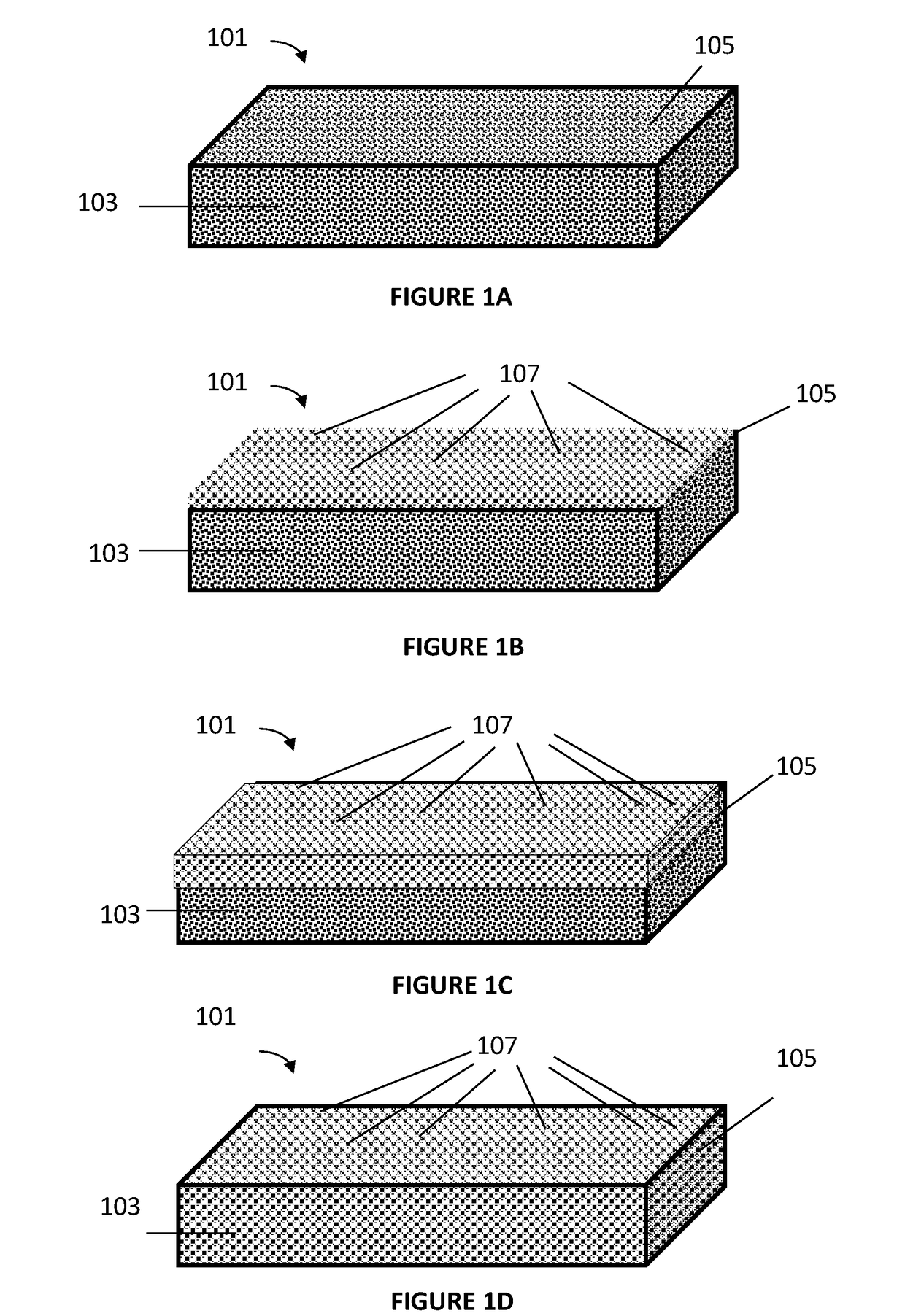Nanoporous metal-based film supported on aerogel substrate and methods for the preparation thereof
- Summary
- Abstract
- Description
- Claims
- Application Information
AI Technical Summary
Benefits of technology
Problems solved by technology
Method used
Image
Examples
example 1 — modified
Example 1—Modified Preparation Procedure of the Aerogel Substrate
[0213]Three main steps are involved in the custom synthesis of silica aerogel substrates. First, silica alcogels are fabricated by a sol-gel technique in a one-step procedure. Then, the alcohol within the gel matrix is exchanged with highly pure (99.99%) liquid carbon dioxide (CO2). Finally, CO2 is brought into a supercritical condition and slowly removed out of the gel pores leaving a dry solid lightweight body (silica aerogel). Hereinbelow, the preparation method is described including the specific modification of the commonly used procedure.
[0214]The sol-gel process included hydrolysis and polycondensation of tetraethyl orthosilicate (TEOS, 98% purity, Sigma Aldrich) in the presence of a catalyst. Since the intended thickness of the aerogel substrate was about 1 mm, the reaction mixture was kept at room temperature. The preparation procedure intentionally avoided the sequential aging step of the alcogels in order to...
example 2
odification of the Aerogel Substrate
[0218]Silica aerogels substrates were prepared according to the Silica Aerogel (TEOS, Base-Catalyzed) procedure described at www.aerogels.com. In brief, NH4F was added to water. Catalyst solution was prepared by mixing NH4F, water, ammonium hydroxide and ethanol. Alkoxide solution was prepared by mixing TEOS and ethanol. The catalyst solution was poured into the alkoxide solution and stir to obtain a sol. The sol was poured into molds and allowed to gel for approximately 8-15 min. Once the gel has set, it was placed under ethanol and aged for 24 h. The solution was changed to ethanol or acetone 7 times over a course of a week. The alcogel was supercritically dried and depressurize at a rate of ˜7 bar / h.
[0219]The obtained aerogel was etched by an ion beam etching technique on a Gatan sputtering machine. The procedure parameters are presented in table 1.
TABLE 1Ion beam etching parametersChamber pressure−4TorrBeam energy2.5keVtime3minGasArCurrent81μA...
example 3
eposition of a Nanoporous Metal Film
[0220]Three different sputtering machines were examined: one of an industrial type (BESTEC) and two on-desk type (Gatan or Desk IV, Denton Vacuum). Sputtering parameters typically employed when using said machines for sputtering of the nanoporous films according to the principles of the present invention are described in Tables 2-4.
TABLE 2BESTEC sputtering parametersStage rotation5rpmcurrent—target distance from stage8cmGas flow2.7sccmWorking pressure5 × 10−6barPreliminary pressure5 × 10−1bar
TABLE 3DENTON sputtering parametersStage rotation5-10rpmcurrent10-20mApressure100-50mTorr
TABLE 4GATAN sputtering parametersChamber pressure−4TorrBeam energy10keVtime3minGasArCurrent614μA
[0221]Sputter deposition with an industrial type machine: Unlike the commonly used conditions in which high dc power voltages (100 W or higher) are employed, for sputtering of different metallic materials lower powers were used, which has a crucial importance for the production...
PUM
| Property | Measurement | Unit |
|---|---|---|
| Fraction | aaaaa | aaaaa |
| Fraction | aaaaa | aaaaa |
| Time | aaaaa | aaaaa |
Abstract
Description
Claims
Application Information
 Login to View More
Login to View More - R&D
- Intellectual Property
- Life Sciences
- Materials
- Tech Scout
- Unparalleled Data Quality
- Higher Quality Content
- 60% Fewer Hallucinations
Browse by: Latest US Patents, China's latest patents, Technical Efficacy Thesaurus, Application Domain, Technology Topic, Popular Technical Reports.
© 2025 PatSnap. All rights reserved.Legal|Privacy policy|Modern Slavery Act Transparency Statement|Sitemap|About US| Contact US: help@patsnap.com



